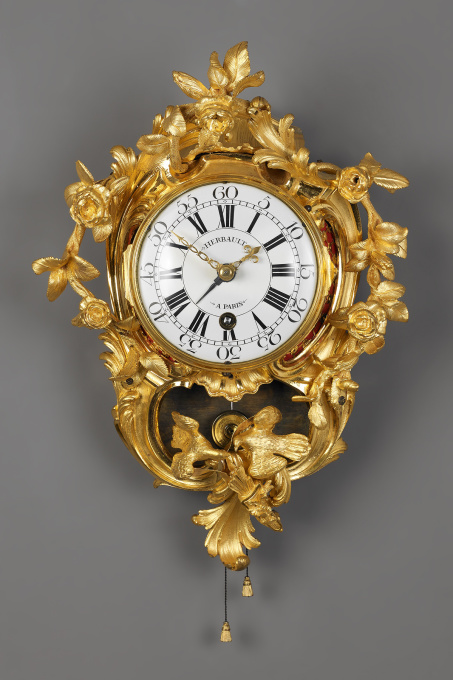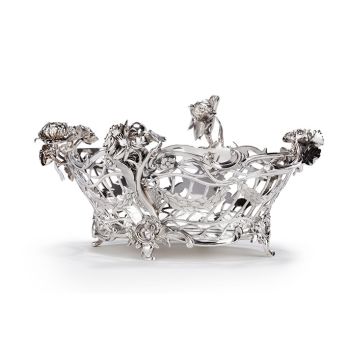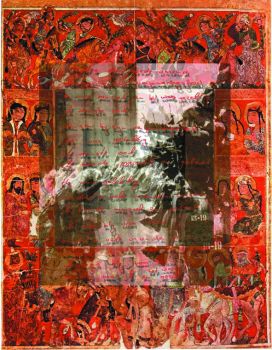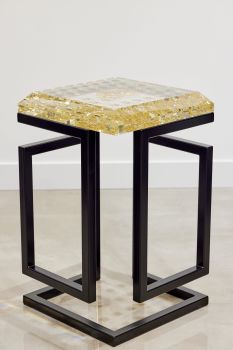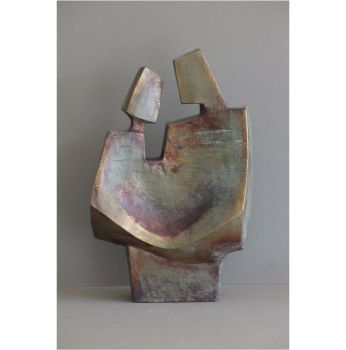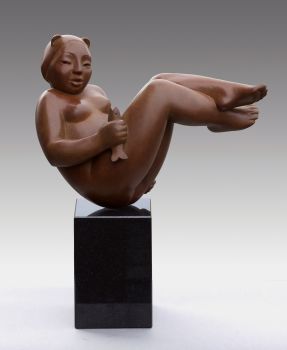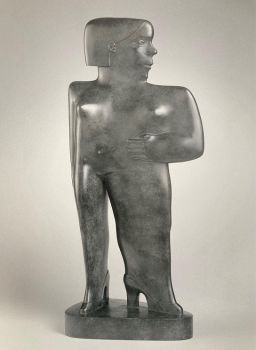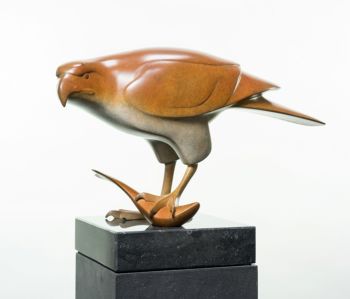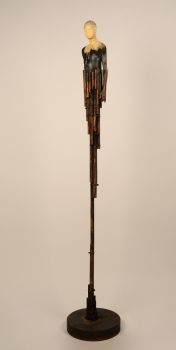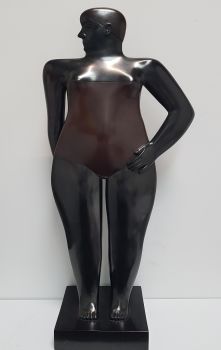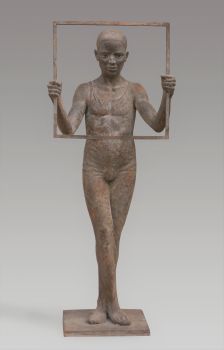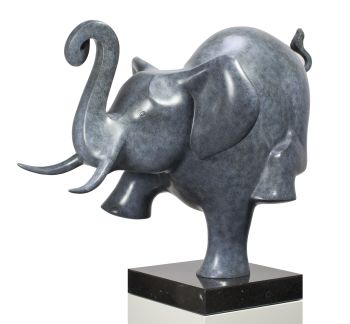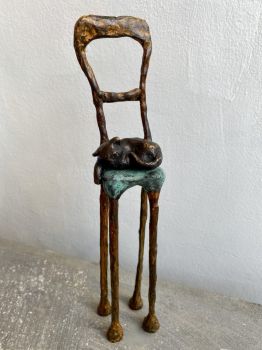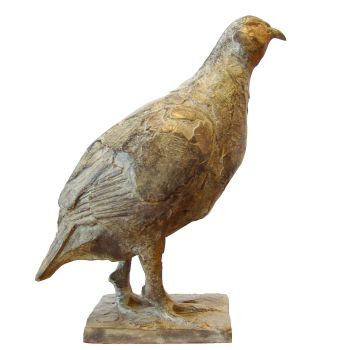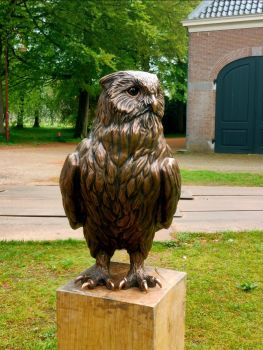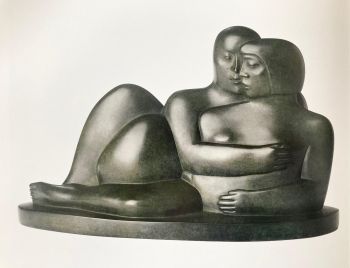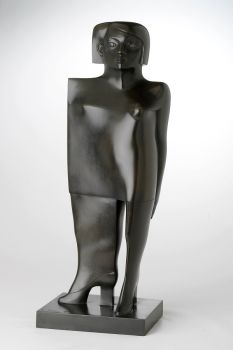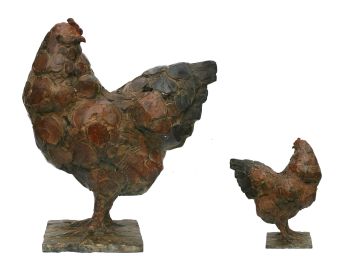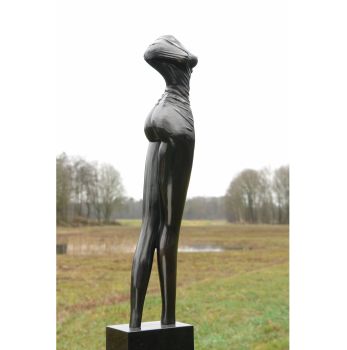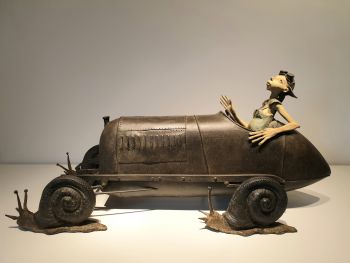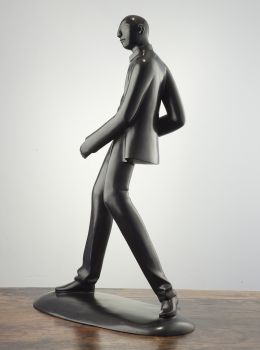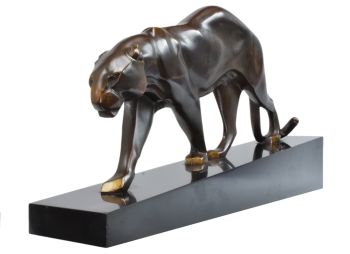A French Louis XV "Cartel d'Alcove" 1750
Louis-François Herbault
BronzoMetalloSmalto
35 ⨯ 25 ⨯ 13 cm
Attualmente non disponibile tramite Gallerease
- A proposito di opere d'arteA Cartel clock made by Louis-François Herbault, who became master clockmaker in 1743. He worked from the Quai Pelletier between 1744 and 1748 and later moved to the Rue de Grenelle Saint-Honoré between 1759 and 1789.
The clock is signed on the dial and on the clockwork: HERBAULT À PARIS
and bears the number: 264.
The clockwork has a three-week going train, a striking train on request, and an alarm. The striking train is operated with a cord. The white enamelled dial has Roman numerals to indicate the hours and Arabic numerals in the outer ring to indicate the minutes. The openwork hands are made of gilt bronze. The dial to set the alarm is made of blued steel.
The beautiful asymmetric gilt-bronze case is built up with flowery sprigs in the shape of a rose-bush. At the bottom two lovebirds have perched upon Amor’s quiver. The ensemble is a celebration of love. From the bottom up the branches are twining upwards around the dial to end in a crest of leaves and flowers. Behind the lovebirds there is an opening that shows the pendulum.
The case is an idiosyncratic example of the “style Rocaille”, which slightly differs from the sometimes exaggerating Rococo. The Rocaille is characterized by long undulating lines that look very natural. Often the lines consist of leaf and flower motives that culminate in an emphatic composition, like in this case the crest of leaves and flowers at the top. Although the details of objects made in the Rocaille style show a lot of asymmetry, the entities always have a balanced and natural appearance.
Provenance:
Private Collection Brussels - A proposito di opere artistaLouis-François Herbault è conosciuto come un orologiaio francese. Herbault divenne Maître nell'anno 1745. Divenne A juré nel 1761 e Garde nel 1769. La sua bottega si trovava in Quai Pelletier, 1744-1748 e Rue de Grenelle St. Honoré, 1759-1789. Oltre agli orologi, produceva anche orologi. Un particolare pezzo in oro e smalto è esposto al Victoria and Albert Museum di Londra. La sua opera è firmata HERBAULT A PARIS.
Artwork details
Categoria
Stile
Materiale e Tecnica
Colore
Related artworks
- 1 - 4 / 17
 A cura di
A cura diDanny Bree
Artista Sconosciuto
A rare Japanese export lacquer medical instrument box1650 - 1700
Prezzo su richiestaZebregs & Röell - Fine Art - Antiques
Artista Sconosciuto
COPPIA DI TORCHÈRE O PORTACANDELE IN TEAK INDONESI LACCATI E DORATI18th century
Prezzo su richiestaZebregs & Röell - Fine Art - Antiques
Artista Sconosciuto
The Stamford Raffles Secretaires.1800 - 1813
Prezzo su richiestaZebregs & Röell - Fine Art - Antiques
Artista Sconosciuto
UN NETSUKE IN AVORIO DI UN OLANDESE CHE GIOCA CON UN RAGAZZINO18th century
Prezzo su richiestaZebregs & Röell - Fine Art - Antiques
1 - 4 / 24- 1 - 4 / 24

